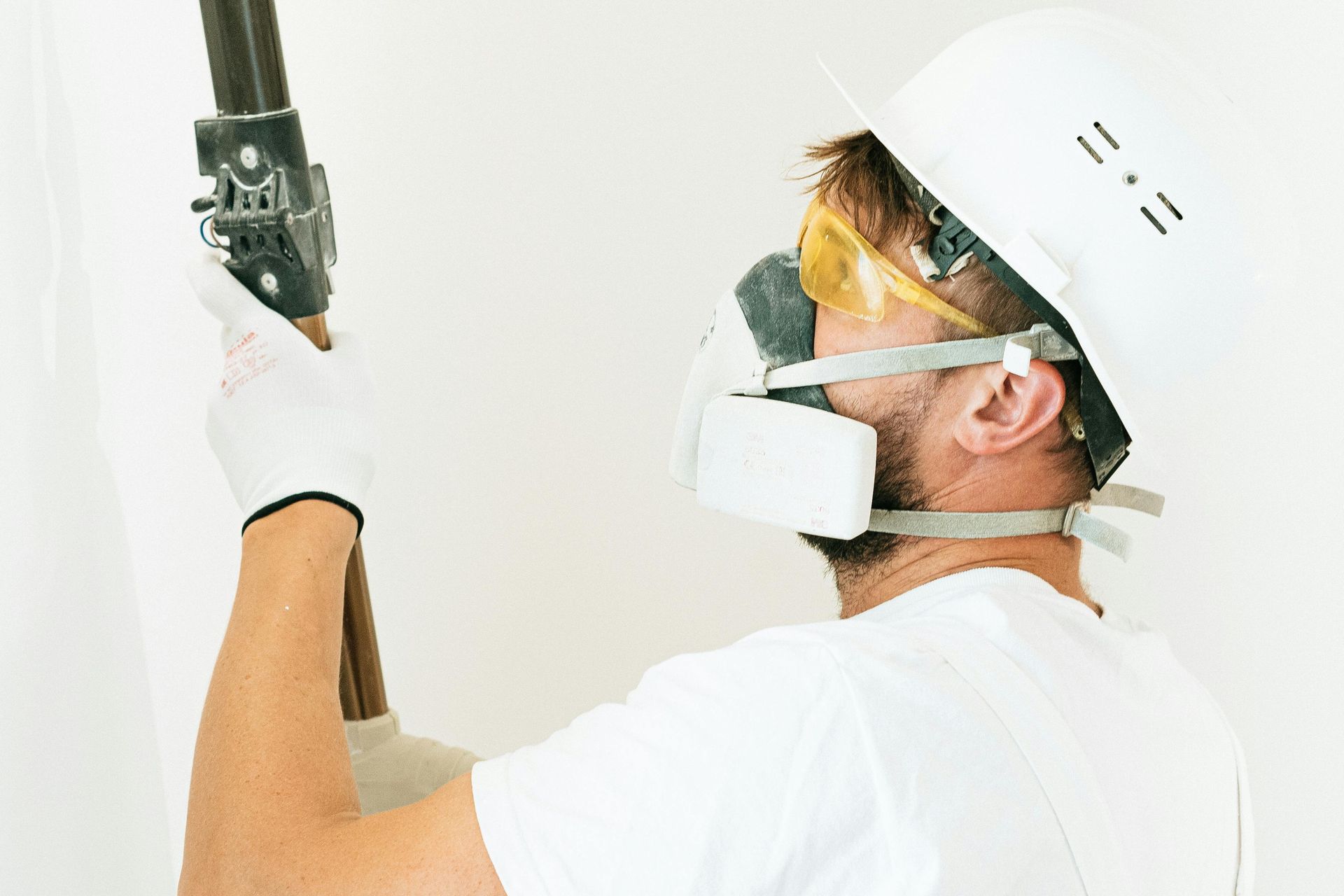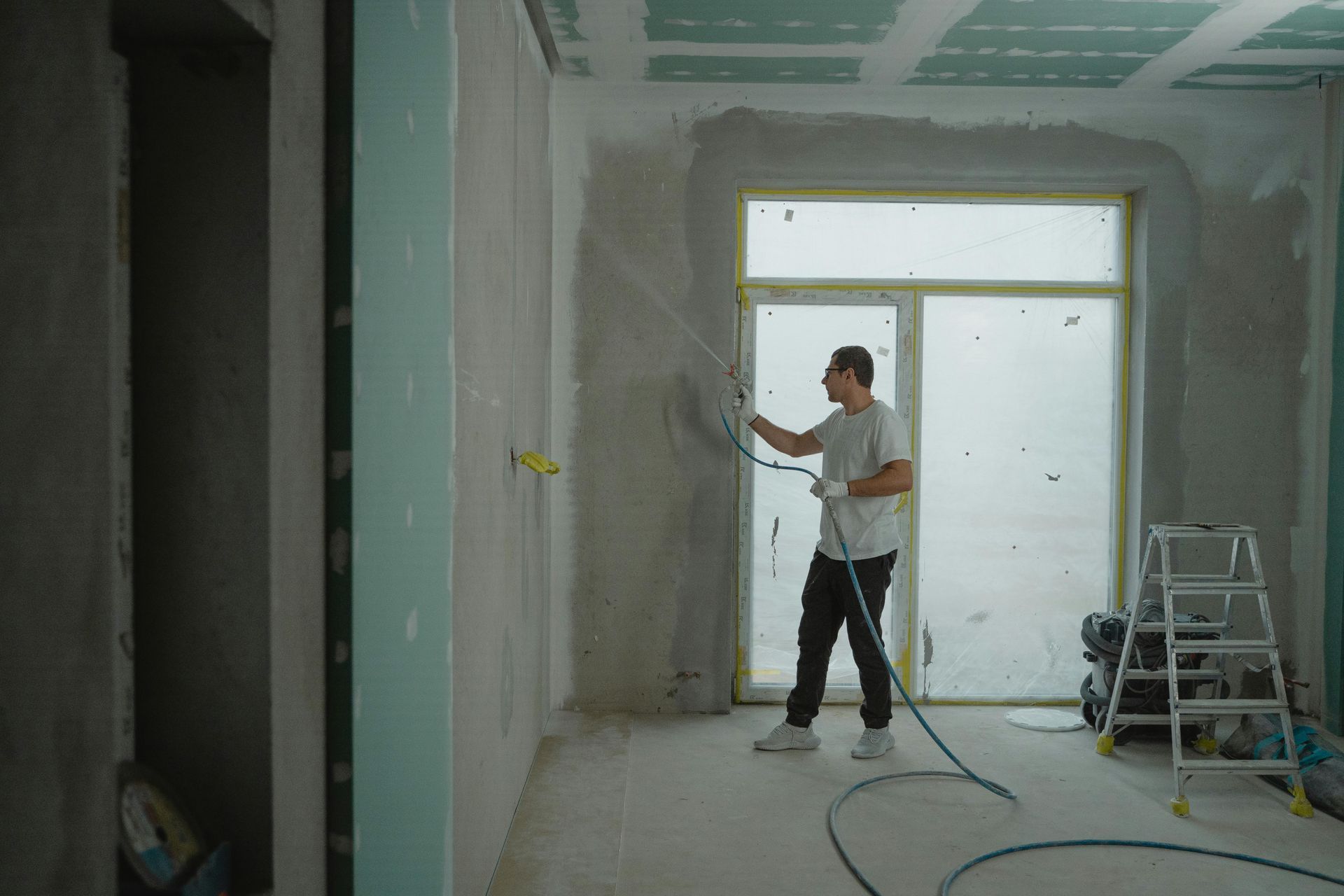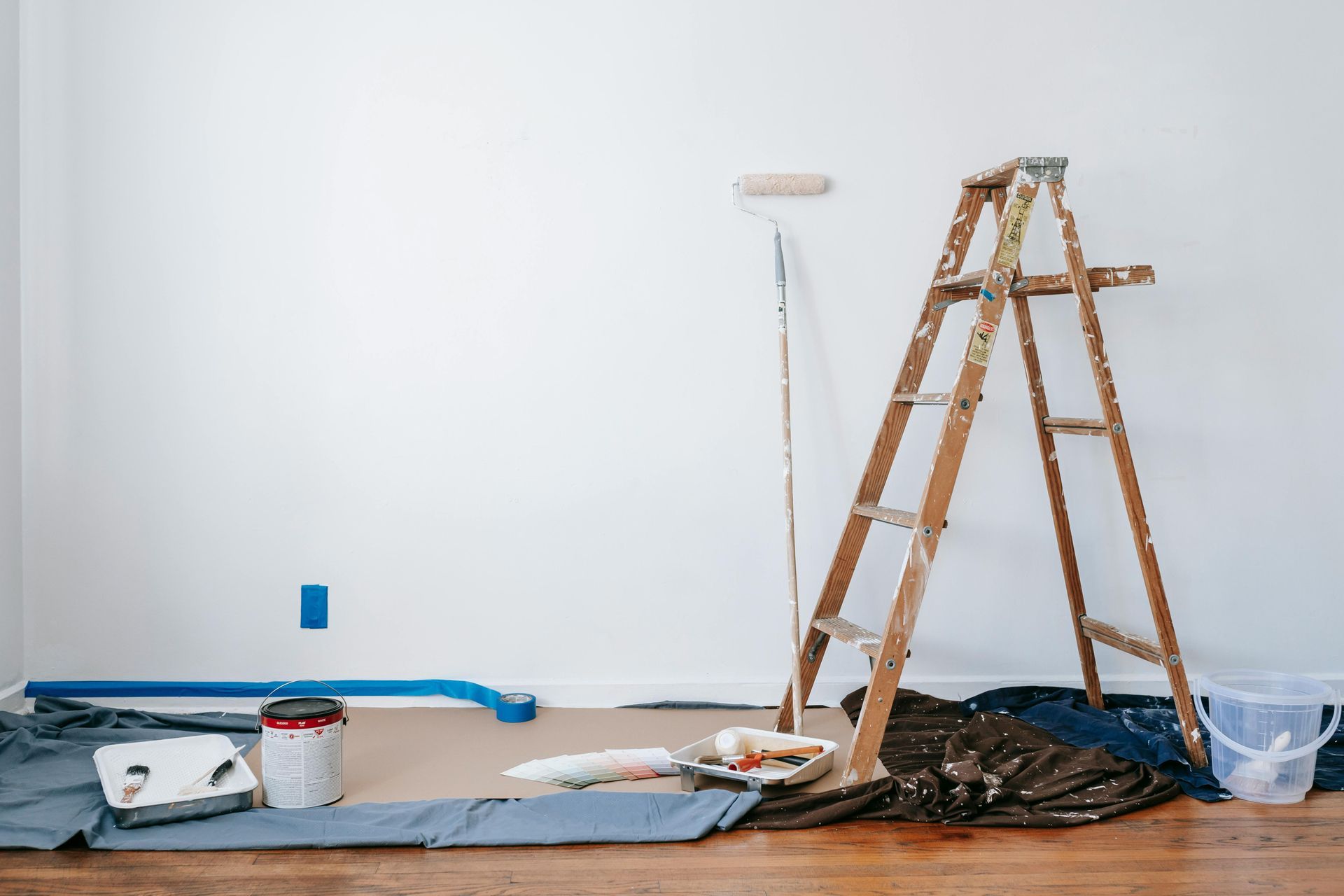Choosing the right flooring for areas that see constant foot traffic requires careful consideration of durability, maintenance, and long-term value. High-traffic zones like entryways, hallways, kitchens, and living rooms demand materials that withstand daily wear while maintaining their appearance. Understanding which flooring options perform best can save you from costly replacements down the line.
The cost to replace floors varies significantly based on material choice, room size, and installation complexity. This guide examines the most reliable flooring materials that balance performance with practicality for busy households.
Understanding your specific needs, including household traffic patterns and moisture exposure, will help you make an informed decision. The right flooring investment protects your home's value while creating comfortable, functional spaces.
Key Takeaways
- Luxury vinyl plank and tile offer exceptional durability with water resistance, making them ideal for kitchens, bathrooms, and entryways where spills occur frequently.
- Porcelain and ceramic tiles provide unmatched longevity and are nearly impervious to scratches, stains, and moisture, though installation costs run higher than many alternatives.
- Engineered hardwood delivers the warmth of natural wood with enhanced stability, resisting warping and moisture damage better than solid hardwood in high-traffic areas.
- The cost of flooring installation depends on material selection, subfloor preparation, and labor rates, typically ranging from moderate to premium pricing depending on complexity.
- Regular maintenance routines specific to your flooring type extend lifespan significantly, preventing premature wear and protecting your investment.
- Selecting flooring based on your household's specific traffic patterns and moisture exposure ensures long-term satisfaction and reduces the need for early replacement.
Understanding High-Traffic Flooring Needs
High-traffic areas face unique challenges that standard flooring may not withstand. Entryways accumulate dirt and moisture from outdoor shoes. Hallways see constant footsteps throughout the day. Kitchens deal with dropped utensils and spills. Living rooms host furniture movement and regular gatherings. Each space demands flooring that resists scratches, dents, stains, and moisture while maintaining visual appeal.
The best flooring for high-traffic areas balances multiple performance factors:
- Wear resistance: Determines how well materials hold up against scuffing and abrasion from constant foot traffic and movement.
- Moisture tolerance: Prevents warping or discoloration after spills, essential for kitchens and entryways.
- Impact resistance: Protects against dents from dropped objects and heavy furniture placement.
- Aesthetic durability: Ensures the flooring looks good years after installation, not just initially.
Budget considerations shape flooring decisions beyond initial material costs. How much to replace flooring in the house includes subfloor preparation, underlayment, installation labor, and finishing work. Some materials require professional installation, while others suit capable DIYers. Factoring in expected lifespan and maintenance costs provides a clearer picture of long-term value.
Top Durable Flooring Materials
Luxury Vinyl Plank and Tile
Luxury vinyl has emerged as a leading choice for flooring for high-traffic areas due to its remarkable durability and practicality. The multilayer construction includes a rigid core, a photographic design layer, and a protective wear layer that shields against scratches, stains, and moisture. Modern luxury vinyl convincingly replicates hardwood planks or natural stone tiles while offering superior performance.
Key advantages of luxury vinyl include:
- Exceptional water resistance: Unlike hardwood or laminate, vinyl handles standing water without warping or swelling, making it ideal for kitchens, bathrooms, and entryways.
- Comfortable underfoot: Provides sound absorption and softer feel compared to hard tile surfaces, reducing fatigue in standing areas.
- Easy installation: Click-lock systems enable floating installations over existing floors, reducing labor expenses significantly.
- Low maintenance: Requires only regular sweeping and occasional damp mopping with standard cleaners, perfect for busy households.
Porcelain and Ceramic Tile
Porcelain and ceramic tiles deliver unmatched longevity and resilience in high-traffic environments. These fired clay products resist scratches, stains, fading, and moisture better than virtually any other residential flooring option. Porcelain, with its denser composition and lower water absorption rate, outperforms standard ceramic in durability. Both materials maintain their appearance for decades with minimal care.
Consider these tile characteristics:
- Extreme durability: Resists scratches, stains, and moisture damage, often lasting the lifetime of your home when properly installed.
- Hard surface drawbacks: Dropped dishes often break on tile, and the rigid material offers no cushioning underfoot, requiring area rugs for comfort.
- Grout maintenance: Requires periodic sealing and cleaning to prevent staining and discoloration between tiles.
- Higher installation costs: Skilled labor required for proper setting, though large-format tiles can reduce installation time and grout lines.
Engineered Hardwood
Engineered hardwood combines natural wood beauty with enhanced structural stability. The construction layers a thin hardwood veneer over plywood or high-density fiberboard, creating a product that resists moisture-related expansion and contraction better than solid hardwood. This makes engineered wood viable for spaces where traditional hardwood struggles, including below-grade installations.
Engineered hardwood features:
- Variable durability: Premium products with thicker wear layers can be refinished one or more times, significantly extending lifespan.
- Enhanced stability: Resists warping and moisture damage better than solid hardwood, suitable for basements and areas with humidity fluctuations.
- Protective finishes: Aluminum oxide coatings resist scratches and daily wear while maintaining authentic wood appearance.
- Flexible installation: Floating, glue-down, or nail-down methods adapt to different subfloors, with costs falling between luxury vinyl and solid hardwood.
Laminate Flooring
Laminate flooring provides budget-conscious homeowners with a durable option that mimics hardwood or stone through high-resolution photographic layers. The composite core construction includes a moisture-resistant fiberboard base, decorative layer, and protective wear layer rated by AC numbers. Higher AC ratings indicate better durability, with AC3 or AC4 grades recommended for residential high-traffic areas.
Laminate flooring considerations:
- Good scratch resistance: Performs well under normal traffic and resists scratches better than solid hardwood with sealed surfaces that repel stains.
- Cannot be refinished: Once damaged, laminate planks must be replaced as the surface cannot be sanded or refinished like wood.
- Moisture vulnerability: Despite water-resistant cores, edges remain vulnerable and spills need prompt cleanup to prevent swelling at seams.
- DIY-friendly installation: Click-lock systems and floating installation methods work over most subfloors, delivering solid performance at accessible price points.
Cost Considerations and Installation
Understanding the complete financial picture helps homeowners budget appropriately for flooring projects. Material costs represent just the starting point. Professional installation labor, subfloor preparation, underlayment materials, and finishing work all contribute to final expenses. Removal and disposal of existing flooring adds another cost layer for replacement projects.
Labor rates for the cost of flooring installation vary by region, contractor experience, and project complexity. Tile installation requires skilled craftspeople and costs more per square foot than floating floor systems. Getting multiple quotes from licensed contractors provides price comparisons and helps identify fair market rates.
Subfloor condition directly impacts installation costs and long-term performance. Uneven, damaged, or squeaky subfloors need correction before new flooring goes down. Moisture barriers may be necessary for below-grade installations. These preparatory steps add expense but prevent future problems like cupping or buckling.
Flooring Comparison Overview
| Material Type | Durability | Water Resistance | Cost Range |
|---|---|---|---|
| Luxury Vinyl | High | Excellent | Moderate |
| Porcelain Tile | Very High | Excellent | Moderate to High |
| Engineered Hardwood | High | Good | Moderate to High |
| Laminate | Moderate to High | Fair to Good | Low to Moderate |
Maintenance and Longevity Tips
Proper maintenance extends the life of any flooring material while preserving its appearance and performance. Regular cleaning prevents dirt and grit from acting as abrasives that gradually dull surfaces and cause premature wear. Establishing simple daily and weekly maintenance habits protects your flooring investment far more effectively than reactive repairs.
Essential preventive measures include:
- Entry mats: Capture dirt and moisture before they spread throughout your home, reducing the abrasive particles that wear down flooring.
- Furniture pads: Prevent scratches and dents from chairs and tables, especially important for softer materials like vinyl and hardwood.
- Area rugs: Distribute wear more evenly in high-traffic pathways, protecting the flooring underneath from concentrated damage.
- Prompt spill cleanup: Stops stains from setting and moisture from penetrating vulnerable edges or seams, critical for all flooring types.
Each flooring type requires specific care. Vinyl needs sweeping and damp mopping with pH-neutral cleaners. Hardwood requires dust mopping and wood-specific products. Tile demands grout cleaning and periodic resealing. Laminate needs gentle cleaning without excessive moisture. Understanding your flooring material's requirements ensures you protect rather than harm surfaces during routine care.
Making the Right Choice for Your Home
Selecting the best flooring for high-traffic areas requires balancing practical performance with aesthetic preferences and budget realities. Start by honestly assessing your household's specific needs. Consider who uses the space, how often, and what activities generate the most wear. Families with young children face different challenges than empty nesters, while pet owners need different features than households without animals.
Climate and environmental factors influence material suitability. Humid regions favor moisture-resistant options like luxury vinyl or tile. Homes with radiant heating systems need materials that conduct heat efficiently without warping. Below-grade installations rule out solid hardwood but work well with engineered wood, vinyl, or tile.
Long-term value calculations extend beyond initial costs. A material that costs more upfront but lasts decades may deliver better value than cheaper options requiring frequent attention or early replacement. Sample materials before committing to large purchases when possible. Many retailers offer samples you can take home to evaluate in your actual lighting conditions alongside existing decor.
Frequently Asked Questions
What is the most durable flooring for high-traffic areas?
While porcelain tile ranks as the most durable flooring option, resisting scratches, moisture, and wear for decades with minimal maintenance, luxury vinyl plank offers comparable durability. In addition, it offers better comfort underfoot and easier installation.
How much does it typically cost to replace flooring in a house?
Total costs depend on material selection, room size, and installation complexity, with prices varying significantly by region and contractor. Basic laminate installations start lower while premium tile or hardwood projects cost considerably more per square foot including labor.
Can engineered hardwood handle high-traffic areas?
Quality engineered hardwood with thick wear layers and durable finishes performs well in high-traffic spaces when properly maintained. It resists moisture better than solid hardwood while delivering authentic wood appearance and feel.
Is luxury vinyl worth the investment for busy households?
Luxury vinyl delivers excellent value through its combination of durability, water resistance, easy maintenance, and moderate pricing. The material handles daily wear exceptionally well while offering design flexibility and straightforward installation.
How long does flooring typically last in high-traffic areas?
Lifespan varies by material and maintenance, with porcelain tile lasting 50 plus years and luxury vinyl performing well for 15 to 25 years. Proper care and prompt repairs significantly extend any flooring material's functional life regardless of traffic levels.
Final Thoughts
Choosing flooring for high-traffic areas represents a significant home improvement decision that affects daily life and long-term value. The right selection balances durability, maintenance requirements, aesthetic appeal, and budget considerations. Understanding the strengths and limitations of each option empowers informed decisions that serve your actual needs.
The cost to replace floors and the cost of flooring installation together form substantial investments that deserve careful planning. Taking time to evaluate your home's specific conditions, traffic patterns, and environmental factors ensures your flooring choice performs optimally for years. Professional installation typically delivers superior results and longevity.
Whether you select luxury vinyl for practical performance, tile for ultimate durability, or engineered hardwood for natural beauty, commitment to proper maintenance protects your investment. Regular care routines tailored to your flooring type prevent premature wear and preserve appearance. Making an informed choice based on thorough research positions you for long-term satisfaction.




